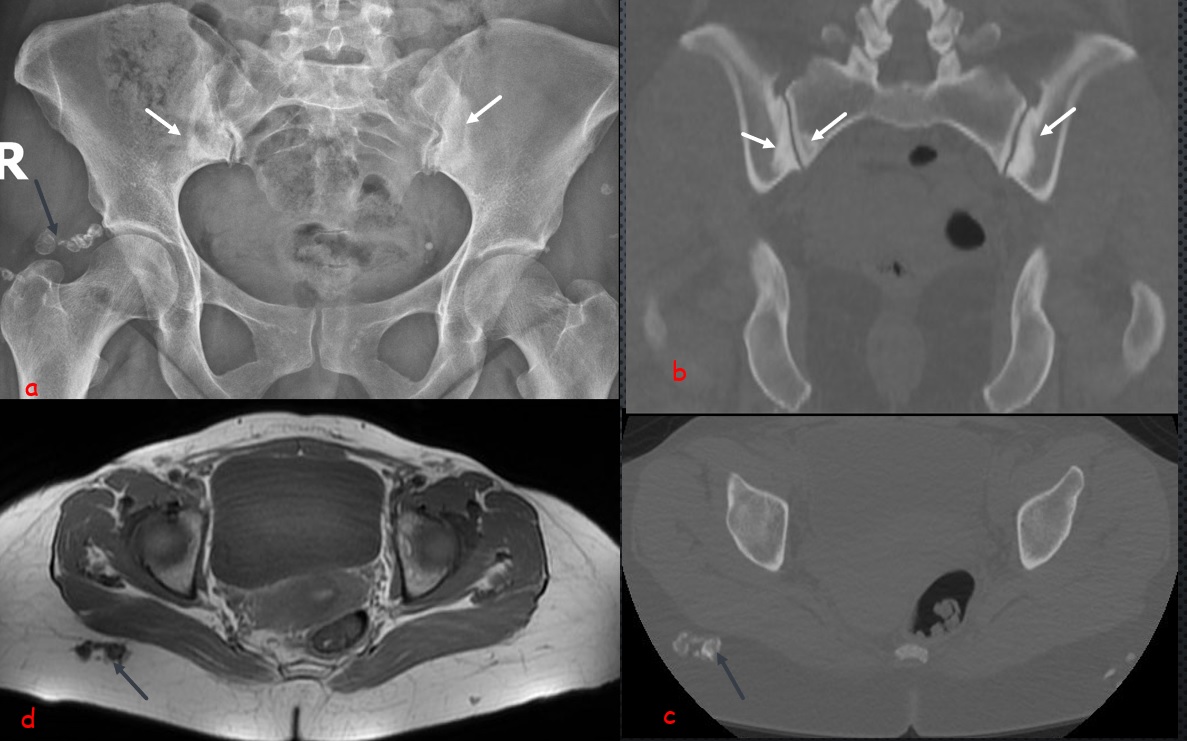Osteitis Condensans Ilii

Demographic and clinical details: 52 years old female, with a low back pain
Image Details AP radiograph of pelvis (a) shows sclerosis at inferior iliac side of the bilateral sacroiliac joints (white arrows) consistent with osteitis condensans ilii (OCI). Note the multiple loose bodies like calcification (black arrow) at superior periarticular region of left hip joint which resembles to the loose bodies of synovial osteochondromatosis. Both iliac side and right sacral side sclerosis are seen on coronal plane CT with bone window(b). CT (c) and T1-weighted MR (d) images of the axial plane shows that the calcified nodules seen on pelvis radiography (a) is consistent with gluteal injection site granulomas (GISG)
OCI is a benign condition marked by sclerosis of the iliac bone typically bilateral and triangular in shape ,found incidentally on imaging or in the setting of lower back pain. Although its etiology is unknown, the most accepted hypothesis is the mechanical stress across the sacroiliac joints leading to sclerosis during the pregnancy. It must be differentiated from sacroiliitis. Lack of sacral involvement, bone erosions or joint space narrowing is considered diagnostic. Sacral or unilateral involvement has been seen in OCI.
GISG is a very common finding on CT and direct Xray’s of pelvis. They generally occurs as result of subcutaneous fat tissue injection of drugs resulting in granuloma formation and and account focal fat necrosis, scar formation and dystrophic calcification.
In my experience, Plain radiographic findings of OCI that are lack of sacral involvement, bone erosions or joint space narrowing are usually sufficient for the diagnosis of OCI but sacral involvement can be seen also. GISG can be seen incidentally on pelvis radiographies. As seen in our case, ıt can be seen like articular-periarticular loose bodies of synovial osteochondromatosis when evaluated with just one view radiograph. That is why evaluation with at least 2 view radiography or cross-sectional imaging methods like CT or MRI are very important for the correct diagnosis of musculoskeletal pathologies.


0 COMMENTS
These issues are no comments yet. Write the first comment...